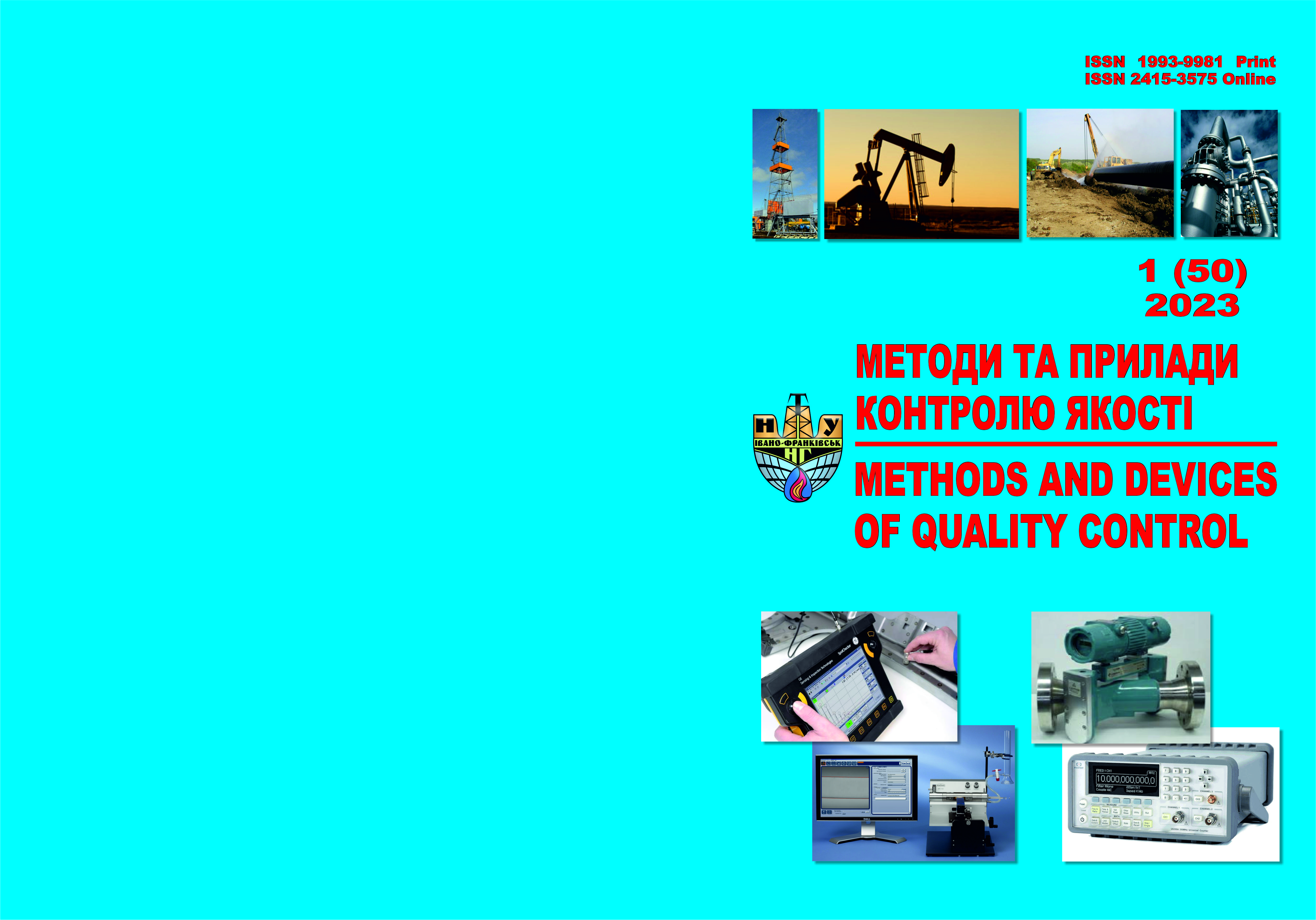ПРОГНОЗУВАННЯ ЯКОСТІ ПРОГРАМНИХ ЗАСОБІВ НА ОСНОВІ АНАЛІЗУ ЯКОСТІ ВИМОГ
DOI:
https://doi.org/10.31471/1993-9981-2023-1(50)-101-112Анотація
Оцінка якості програмного забезпечення є важливою складовою частиною його розробки з метою як забезпечення останньої так і обґрунтованого порівняння програм чи їх версій. В даний час оцінка якості програмного забезпечення базується на цілому ряді міжнародних стандартів. При цьому, як правило, використовуються методи експертного оцінювання на основі метричного підходу оцінки якості програмних засобів. Прогнозування характеристик якості програмних засобів це наступний крок забезпечення якості, що має дозволити як одержати обґрунтовані досяжні характеристики якості, так і служити, наприклад, для маркетингових досліджень.
У роботі розглянуто існуючі підходи до прогнозного моделювання характеристик якості програмних засобів. Проаналізовано фактори, які визначають прогноз якості програмних засобів. Встановлено, що одним із основних факторів, які визначають якість розроблюваного продукту є якість вимог до нього. Запропоновано метод прогнозування характеристик якості програмних засобів на основі характеристик якості вимог. Характеристики якості вимог встановлюються на етапі тестування (верифікації) вимог. Вихідними даними, від яких відштовхується прогнозна модель, є характеристики якості, що одержуються методом історичних аналогій. Прогнозна модель передбачає просту лінійну залежність впливу характеристик вимог на прогнозовані характеристики програмного засобу, але при цьому враховується кількість вимог (величина проекту) та їх класифікація. Фактично, метод прогнозування полягає у встановлені впливу оцінки характеристики якості вимог на характеристики якості майбутнього проекту, і здійснюється методом експертного оцінювання. Одержані значення можуть бути використані як для обґрунтування досяжних характеристик якості, так і для покращення “зворотніх зв’язків” з замовниками для покращення вимог до проекту.
Завантаження
Посилання
Lanubile F. and Visaggio G. Evaluating predictive quality models derived from software measures: lessons learned. Journal of Systems and Software. 1997. Vol. 38. P. 225–234.
Hong E., Wu C. Criticality models using SDL metrics set, 4 th Asia-Pacific Software Engineering and International Computer Science Conference. 1997. P. 23–30.
Evett M., Khoshgoftar T., Chien P. and Allen E. GP-based software quality prediction, Third Annual Genetic Programming Conference, 1998, P. 60–65.
Zhang D., Tsai J.J.P. Machine learning and software engineering, Software Quality Journal. 2003. Vol. 11, Issue 2. P. 87–119.
Ganesan K., Khoshgoftaar T., Allen E. Casedbased software quality prediction, International Journal of Software Engineering and Knowledge Engineering. 2000. Vol. 10. No 2. P. 139–152.
Khoshgoftaar T., Seliya N. Analogy-Based Practical Classification Rules for Software Quality Estimation, Empirical Software Engineering. 2003. Vol. 8, No 4. P. 325–350.
Khoshgoftaar T., Allen E.B., Deng J. Using regression trees to classify fault-prone software modules, IEEE Transactions on Reliability. 2002. Vol. 51, No 4. P. 455–462.
Netkachova K. I. Safety Case Metodology: Architecting principles. Радіоелектроніка і комп’ютерні системи. Харків: НАУ”ХАІ”. 2010. №7. С.109-112.
Hovorushchenko T.O. Teoretychni ta prykladni zasady informatsiynoyi tekhnolohiyi otsinyuvannya dostatnosti informatsiyi shchodo yakosti u spetsyfikatsiyakh vymoh do prohramnoho zabezpechennya – Kvalifikatsiyna naukova pratsya na pravakh rukopysu. Dysertatsiya na zdobuttya naukovoho stupenya doktora tekhnichnykh nauk za spetsialʹnistyu 05.13.06 «Informatsiyni tekhnolohiyi» (12 – Informatsiyni tekhnolohiyi) – Khmelʹnytsʹkyy natsionalʹnyy universytet, Ukrayinsʹka akademiya drukarstva, Lʹviv. 2018. 310 p. [in Ukrainian].
Biletsʹkyy T. P., Fedasyuk D. V. Prohnozuvannya defektiv u prohramnomu zabezpechenni alhorytmamy hlybynnoho navchannya CNNta RNN. Naukovyy visnyk NLTU Ukrayiny. 2021. T. 31, №2. S. 114 – 120. [in Ukrainian].
Subnis P., Kadam A. Software reliability growth model with bug ccle and duplicate detection techniques. Bharati Vidyapeech Deemed univ. College of Eng. Pune India. 2013. P 345-349.
Yakovyna V. S. Symetsʹ I. I. Prohnozuvannya defektiv prohramnoho zabezpechennya ansamblem neyronnykh merezh. Naukovyy visnyk NLTU Ukrayiny. 2021. T. 31, №6. P. 104 – 111. [in Ukrainian].
Naukovo-tekhnichni doslidzhennya u haluzi informatsiynykh tekhnolohiy: kolektyvna monohrafiya / zah. red. M. V. Kuzʹ. Akademiya tekhnichnykh nauk Ukrayiny. Ivano-Frankivsʹk: Vydavetsʹ Kushnir H.M. 2022. Vol 1. 152 p. [in Ukrainian].
Yerina A. M. Statystychne modelyuvannya ta prohnozuvannya. Kyyiv: KNTEU. 2001. 114 p. [in Ukrainian].
Nezamay B. S. Metodyka prohnozuvannya yakosti prohramnykh zasobiv, Perspektyvy rozvytku nauky, osvity ta tekhnolohiy v konteksti yevrointehratsiyi: zbirnyk tez dopovidey mizhnarodnoyi naukovo-praktychnoyi konferentsiyi (Poltava, 18 08 2022.), Poltava: TSFEND. 2022. P. 65-66. [in Ukrainian].
George Koelsch Herndon Requirements Writing for System Engineering. Virginia, USA. 2016. 409 p.
DSTU ISO/IEC 9126-1:2013. Prohramna inzheneriya: YAKISTʹ PRODUKTU Chastyna 1. Modelʹ yakosti (ISO/IEC TR 9126-1:2001, IDT). (Natsionalʹnyy standart Ukrayiny) [in Ukrainian].
Nezamay B. S. Prohnozuvannya yakosti prohramnoho zabezpechennya. 2022 International Conference on Innovative Solutions in Software Engineering (ICISSE) prysvyachena 50-richchyu vid dnya narodzhennya profesora Pavla Fedoruka. Ivano-Frankivʹk, 30 11 2022. Ivano-Frankivsʹk: PNU. 2022. p. 86-89. [in Ukrainian].


.png)




